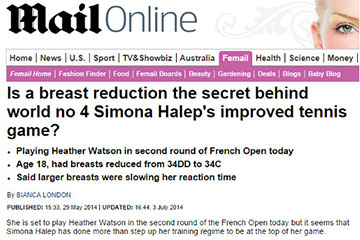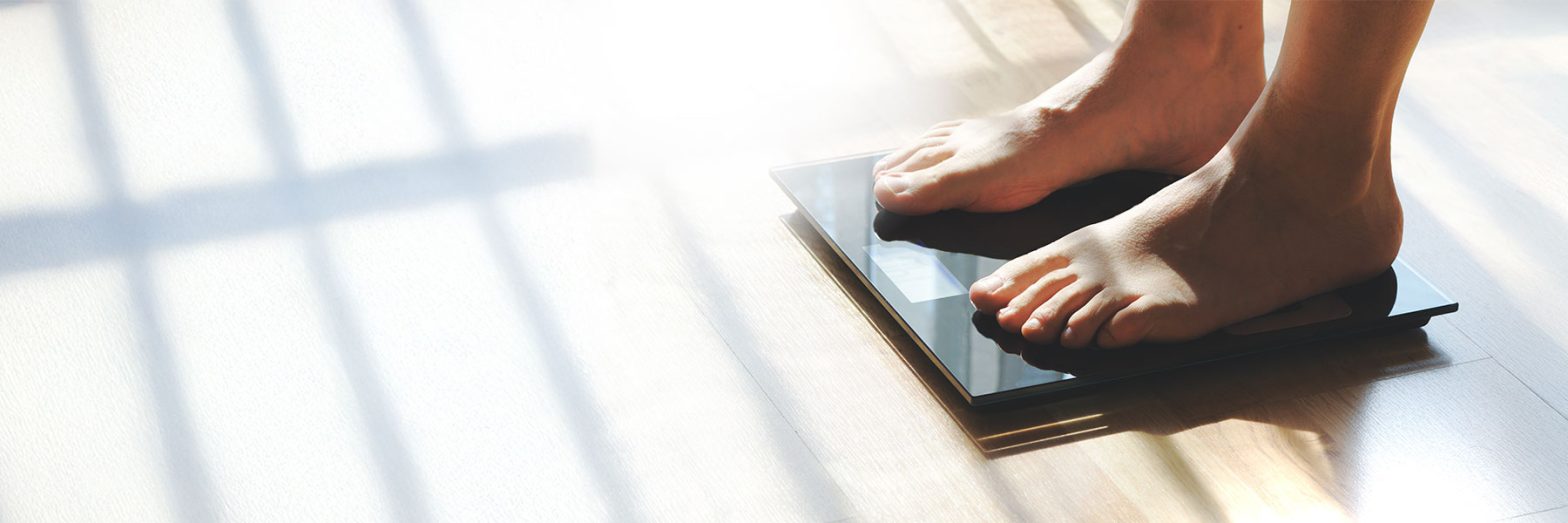
Is a Breast Reduction The Secret?
LIPOSUCTION
Mail Online
She is set to play Heather Watson in the second round of the French Open today but it seems that Simona Halep has done more than step up her training regime to be at the top of her game.
In her teens Simona, 22, the current Romanian No. 1 who is ranked number 4 in the world, underwent a breast reduction to improve her tennis.
Aged 18 she announced she was having her breasts reduced from a 34DD to a 34C because they were slowing her reaction time.
Perhaps it has helped. Simona landed a spot in the world’s top 50 at the end of 2012, won her first 6 WTA titles, and was named both the WTA’s Most Improved Player and ESPN Center Court’s 2013 Most Improved Player.
‘It has been an important part of her career,’ Fissette, a Belgian who used to coach Kim Clijsters, told The Independent. ‘I guess it was the right decision. I did not see her then. I have seen some photos, but she took that decision and it was a good one. I understand that.
‘Also in the Belgian tpc_newspapers it is the same thing. That’s why she was famous. Let’s hope she will win a Grand Slam and then they will start talking about the Grand Slams and not something else.’
But not everyone was in support of Simona’s surgery choice. South African beach volleyball player Alena Schurkova launched a big-boob-pride campaign in 2010 after hearing the tpc_news.
She argued: ‘If she does this, it sends out the message that girls with big boobs can’t play sports, and that is just wrong.
‘I am 32E, and I have never found them to be a problem. I could be double what I have and I would still be okay to perform.’
Dr Puneet Gupta, Cosmetic Doctor at The Private Clinic of Harley Street, the first doctor in the UK ever to offer a non-surgical technique for breast reductions said: ‘For professional athletes who maintain intense training regimes, these problems will of course be felt far more heavily.
‘Training for long hours each day will only intensify the discomfort, meaning the size of their breasts won’t just get in the way of them exercising, but it can also affect their downtime away from sport, because it may take longer for them to rest and recover if they are still in pain in the back and breast areas.
‘Over the years the inability to exercise or take part in sport has certainly become a more commonly cited reason for patients I see who are seriously considering undergoing a reduction.’
Dr Gupta says that medical advancements may also have contributed to the growing number of female athletes undergoing breast reductions.
‘Now there are non surgical breast reduction methods that exist, which can allow women to undergo a reduction with very limited downtime.
‘For females who train regularly or are actively involved in sport, but are being prevented from doing so because of the size of their breast, a minimally invasive reduction technique could be a feasible solution, reducing the amount of time they would need to take away from sport to recover.
He does, however, warn of the dangers of breast reduction in young athletes, many who are under the age of 25.
‘It’s important to note though that a breast reduction won’t be suitable for everyone. It is actually a procedure which is most suited to post-menopausal women, so a very young athlete, for example, might not be suitable for treatment,’ he adds.







